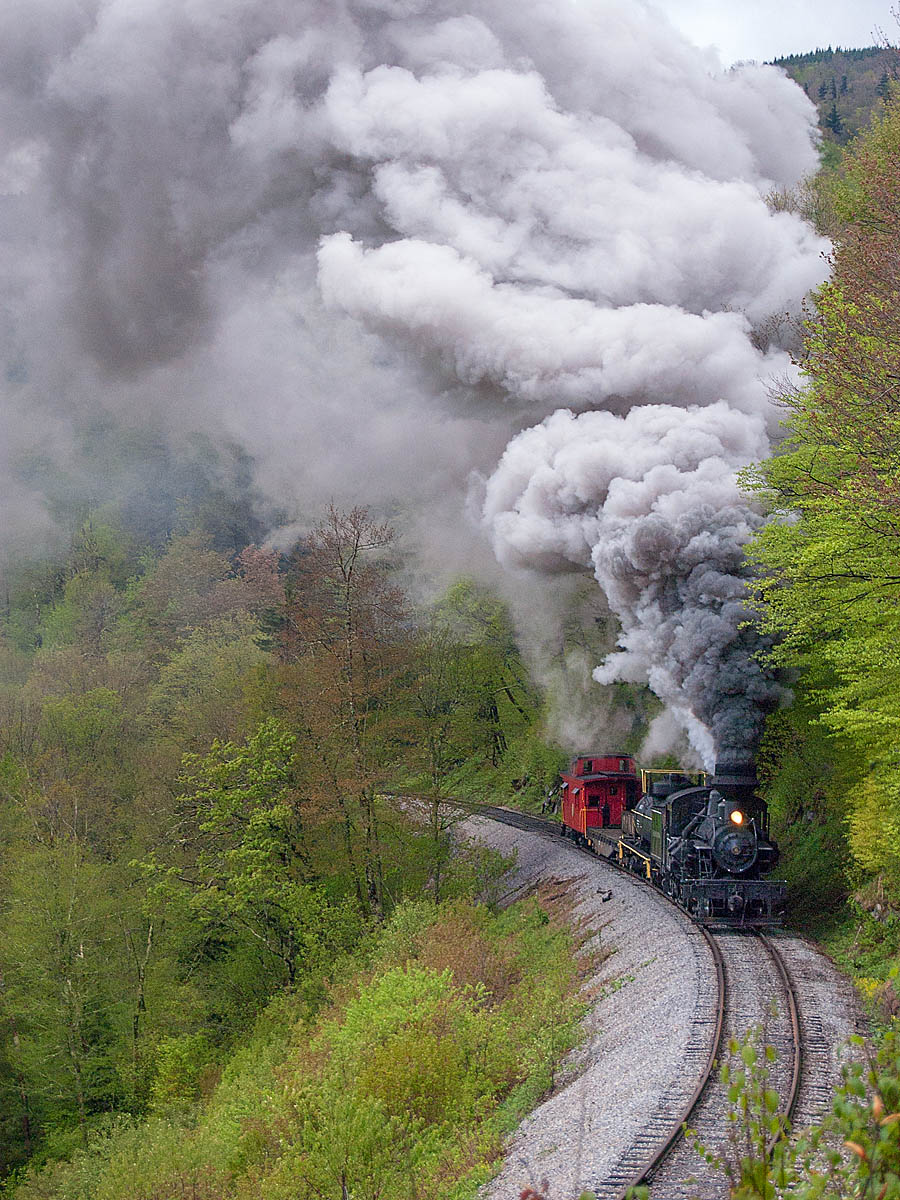A The color of exhaust you see coming out of a steam locomotive’s smoke stack indicates how efficiently it is burning fuel. Darker or blacker smoke is an indication that small fuel particles (coal, wood, fuel oil, etc.) have made it through the firebox unburned and are therefore wasted. Light or nearly invisible exhaust means that the locomotive fuel is mostly burned and transformed into heat, carbon dioxide, water, and trace elements. Factors affecting how efficient a locomotive burns fuel include the skill of the fireman on the engine, the quality of the fuel used, the design of the locomotive itself, and the amount of work the engine is doing. Similar concerns affect the efficiency of internal combustion engine locomotives as well.
Gray clouds trailing a steam locomotive are often a mix of exhaust smoke and steam that appear gray at a distance. On special occasions, train crews on tourist railroads may purposefully create dark smoke plumes so that railfans and observers can take dramatic pictures. – Steve Sweeney















“…skill of the fireman on the engine”, lets not ignore the skill of the engineer as well.
If the exhaust is white it’s not smoke but steam. You usually don’t see this in warm weather, but when it’s cold the steam condenses giving great plums of white exhaust.
Please stop encouraging people to ask for black smoke. It’s detrimental to the locomotive and your more-than-likely to be published pictures leave a sour image for people who don’t understand how small an impact the railroads have now on air pollution. Plus, I’ve worked really hard for years to do the best possible job at firing as cleanly as possible, only to have the black smoke request at the demands of some really rude photographers.
Your answer covers steam locomotives, and that may be what Mr. Gray intended, but a more complete answer also covering diesels could touch on such things as “turbo lag”, worn injectors, and the like, which also result in unburned fuel and black exhaust.